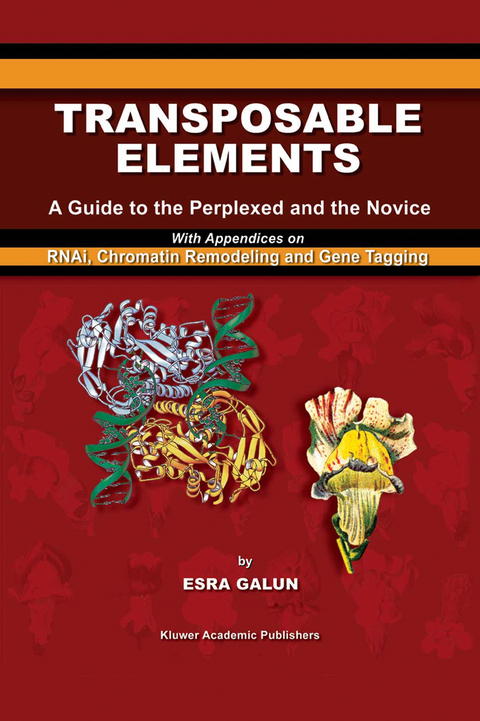
Transposable Elements
A Guide to the Perplexed and the Novice With Appendices on RNAi, Chromatin Remodeling and Gene Tagging
Seiten
2003
Springer-Verlag New York Inc.
978-1-4020-1458-1 (ISBN)
Springer-Verlag New York Inc.
978-1-4020-1458-1 (ISBN)
OY (])PONEOYLI TOIA YTA IIOAAOI OKOEOJII Many fail to grasp what they have seen, and cannot judge what they have learned, ErKYPEOYLI OYL1E MA®ONTEE ITINOEKOYIT although they tell themselves they know. EQYTOJII L1E L10KEOYLI Heraclitus of Ephesus, 500 BC " ... everyone that is not speckled and C~T~v: N,;~, 'T,ji~ ,~~~N ,tuN '= spotted among the goats and brown among the sheep, that shall be counted ~~N N,n =,~, c~w=== c,m stolen with me." Genesis Chapter 30 From Heraclitus of Ephesus and later philosophers, we can deduce that observation of natural phenomena, even when keen and accurate, will not result in meaningful knowledge unless combined with analysis of the mind; just as analysis of the mind without acquaintance with natural phenomena will not suffice to grasp the perceivable world. Only familiarity with phenomena combined with mental analysis will lead to additional knowledge. The citation from Genesis, Chapter 30, is part of an unusual story. It tells how Jacob received, as payment for his service to Laban, the bulk of Laban's herds. By agreement, Jacob was to receive "only" the newborn speckled and spotted goats and the newborn brown sheep that differed completely from their parents. Did Jacob know that there was instability (transposable elements?) in the pigmentation of Laban's herd? It is reasonable to assume that Jacob combined his keen observation with analysis of his mind in order to predict the outcome: most of the newborns were indeed speckled, spotted or brown.
1 Introduction.- 2 Historical Background.- 3 Bacterial Insertion Sequences.- 4 Retrotransposons.- 5 Telomeres and Transposable Elements.- 6 Class II Transposable Elements in Eukaryotes.- 7 Epilogue.- 8 Appendices.- 9 References.
| Erscheint lt. Verlag | 31.7.2003 |
|---|---|
| Zusatzinfo | XIII, 335 p. |
| Verlagsort | New York, NY |
| Sprache | englisch |
| Maße | 155 x 235 mm |
| Themenwelt | Naturwissenschaften ► Biologie ► Botanik |
| Naturwissenschaften ► Biologie ► Ökologie / Naturschutz | |
| Weitere Fachgebiete ► Land- / Forstwirtschaft / Fischerei | |
| ISBN-10 | 1-4020-1458-9 / 1402014589 |
| ISBN-13 | 978-1-4020-1458-1 / 9781402014581 |
| Zustand | Neuware |
| Haben Sie eine Frage zum Produkt? |
Mehr entdecken
aus dem Bereich
aus dem Bereich
Diversität, Morphologie, Ökologie und Evolution der Pilze
Buch | Softcover (2023)
Springer (Verlag)
49,99 €
Gefäßpflanzen: Grundband
Buch | Hardcover (2021)
Springer Spektrum (Verlag)
44,99 €


